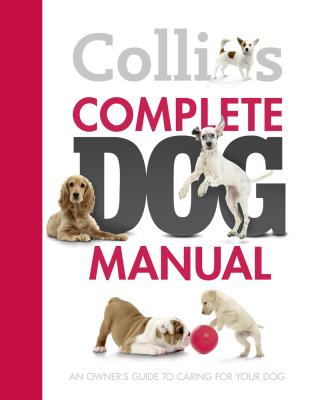Collins Complete Dog Manual. Collins Dictionaries
Чтение книги онлайн.
Читать онлайн книгу Collins Complete Dog Manual - Collins Dictionaries страница 17

A big dog, the Dobermann is very graceful, with a refined outline; a powerhouse athlete. The coat is a glossy black, brown, blue or fawn (Isabella) with a rich tan, which must be well defined. Powerful but elegant, a well-trained Dobermann makes an ideal guard dog and an affectionate pet. If it is well socialized and trained, a Dobermann puppy can adapt really well to family life.
Fact File
Group: Working
Country of Origin: Germany
Male:
69 cm (27 in)
Female: 65 cm (25½ in)
Coat: These dogs moult freely and have a double coat.
Life Expectancy: 10–13 years
Guarding Instinct: A powerful guard dog.
Temperament & Grooming
Temperament: A great family dog needing to be trained.
Grooming: Very little is required; a weekly brush and polish with a chamois leather will be enough.
Exercise & Feeding
Exercise: An hour or so of walking every day with about ten minutes’ free running will suffice. Add fifteen minutes’ play in the garden and a Dobermann will be happy and fit.
Feeding: There are no special feeding requirements.
Health Problems
Low to average hip dysplasia. Buy from eye-tested parents and test the puppy. Von Willebrand disease (here) is also possible.
Great Dane
(© Jean Michel Labat)
The Great Dane is a majestic-looking dog with its powerful physique and appealing expression. Very family orientated, Great Danes are easily trained and obedient. Although large, they are not clumsy and don’t take up too much space. However, a big house and garden are best. Seriously fond of their family’s children, they will defend them if any danger threatens. The Great Dane is a gentle giant in spite of its size.
History
There is no doubt that this dog’s ancestors were giant war dogs from Asia Minor known as Allens. They probably originated from ancient Egypt. They were used as war dogs by Attila the Hun and fought wild animals in Rome’s Colosseum. The modern dog was developed in the 1500s in Germany for hunting wild boar. A pack owned by Earl Philip of Hessen killed 2,572 boar in 1563. From about 1882, when the Breed Club was formed, the breed changed course and became a pet and guard dog.
Description
A majestic dog, the Great Dane has a soft expression and an athletic body with a look of ‘dash and daring’. Colours range from brindle with stripes to fawn-light to dark, blue-light to dark slate, black or harlequin with black or blue patches which appear torn. Friendly, outgoing, favours children – a deeply affectionate big dog, loyal and caring for his family.
Fact File
Group: Working
Country of Origin: Germany
Male:
Min. 76 cm (30 in)
Female:
Min. 76 cm (30 in)
Coat: These dogs moult freely and have a double coat.
Life Expectancy: 6–8 years
Guarding Instinct: Suspicious nature, will guard owners.
Temperament & Grooming
Temperament: It is a courageous, devoted but sensitive breed, belying its bloodthirsty past. Never play fight with this breed.
Grooming: A weekly good brushing will keep the dog’s coat lustrous; the ears need cleaning at the same time.
Exercise & Feeding
Exercise: These dogs need only some gentle exercise when young, which can be built up gradually over time to develop their muscular, athletic body. A fully grown adult Great Dane will demand plenty of walks and free running.
Feeding: There are no special feeding requirements.
Health Problems
Hip dysplasia, elbow dysplasia (see here), bloat and eye problems, which are under investigation.
(Vera Zinkova)
(Nikolai Tsvetkov)
(Liliya Kulianionak)
Parson Jack Russell Terrier
Highly intelligent, the busy Jack Russell is always doing things and is very affectionate as well as being a good guard – ever alert and watchful. Their wonderful friendly nature blossoms within a happy family and they are very patient with children. Ideal for the dynamic country family.
History
Parson Jack Russell was born in Devon in 1795, took a good degree at Oxford and was ordained in 1819. It was while he was up at Oxford that he acquired the terrier bitch that was to be the foundation of the breed that was named after him. While strolling in Magdalen Meadow one day he met the local milkman and saw, for the first time, the terrier named Trump. He did not move until he had persuaded the milkman to part with her.